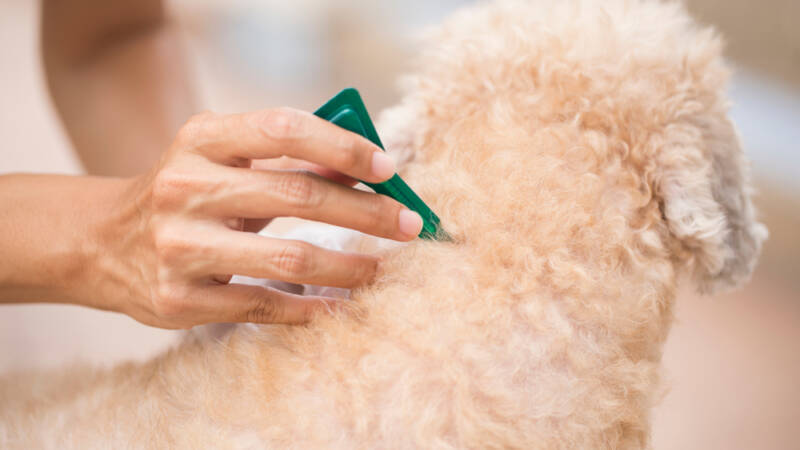Five Tips For Choosing The Right Flea and Tick Medication

Pet owners beware! Fleas and ticks can become a significant problem as spring and summer arrive. They are prevalent in humid weather and thrive in temperatures greater than 70 degrees. If your cat or dog is bitten or gets an infestation, it’ll take some dedication from you – their owner – to deal with the consequences.
These pests feed on your pets’ blood, and can cause irritation, infection and numerous serious diseases. Ticks can transmit Lyme Disease and Rocky Mountain Spotted Fever, while the more than 200 species of fleas can carry various diseases and reactions. If you want to keep your pet and family safe and parasite free (which we hope you do!), here’s everything you need to know about choosing the best treatment.
How to Determine If Your Pet Has Fleas or Ticks
The life cycle of a flea is approximately three to four weeks and a female flea can lay up to 50 eggs a day.
Signs that your pet may have fleas are:
- Scratching
- Irritated, infected skin
- Chewing paws, legs or backside
- “Flea dirt” in fur or on areas that they sleep
- Thinning fur
- Moving or jumping bugs
- White ovals (flea eggs)
- Little worm-like larvae
- Pale looking gums
Signs that your pet has ticks:
- See or feel the tick
- A lump
- A wobbly or unsteady walk
- Difficulty eating
- Lethargy
- Trouble standing
If you suspect your pet has either of these pests, take a thorough look through their fur and contact your veterinarian to determine the severity and best course of treatment.
How To Choose The Right Medication
There are many tick and flea medications on the market, so it may feel overwhelming to choose one. Here are some things to speak to your veterinarian about when choosing what is best for you and your pet.
1. Safe for You and Your Pet
You must choose a product and dose appropriate for the age, type and size of your pet. You should also find out how to apply it to prevent it from touching your skin and wash your hands right after application. Finally, verify that it won’t interact negatively with any other medications your pet is one.
2. Works Quickly and Reliably
Many products start to work immediately, which is ideal to start prevention or bring relief to your pet. Speed and reliability are important factors in both preventative medication and treatment after a bite or infestation.
3. Kills Pests During All Stages of Life
Some products will kill or repel all life stages of the pest, from egg to adult. If you can safely use these, it will take less time to get rid of the pests. Speak with your vet about what types of fleas and ticks are prevalent where you live to be sure you target those.
4. Easy to Use
Your pet’s temperament (and perhaps your willingness to be scratched or growled at) can play a role in your treatment choice. Opting for a treatment type that will be easy to use increases the likelihood that you’ll stick to the regimen.
5. Matches Your Pet’s Preference
Does your dog or cat hate a collar? Is it impossible to hide a tablet in a treat? If your dog is terrified of the bathtub, using a shampoo isn’t exactly ideal. Choose something that will work for them. You should also consider how much time they’ll be spending outside, which increases their risk. For example, if you spend a lot of time hiking and camping with your dog, you may need a different treatment than one that only walks the block twice a day.
Types of Treatment
There are three common types of treatments, though more exist. You can choose from a topical, which is applied to the skin between the shoulder blades, an oral tablet, or a dip or shampoo. The Companion Animal Parasite Council has an excellent detailed list of options on their website.
Potential Side Effects and Warnings
Side effects are not common, but they do happen. Ask you vet and read the “Side Effect and Warnings” section on the product package. Side effects may include:
- Lethargy
- Vomiting
- Diarrhea
- Skin irritation
- Seizures
We love our pets and do everything we can to keep them healthy and safe. Knowing what to look for and regularly checking for fleas or ticks can help prevent problems from occurring. If they aren’t already, consider putting your pet on a preventative medication. As always, get in touch with your veterinarian if your pet has met with fleas or ticks or is acting “off” after starring a new treatment.